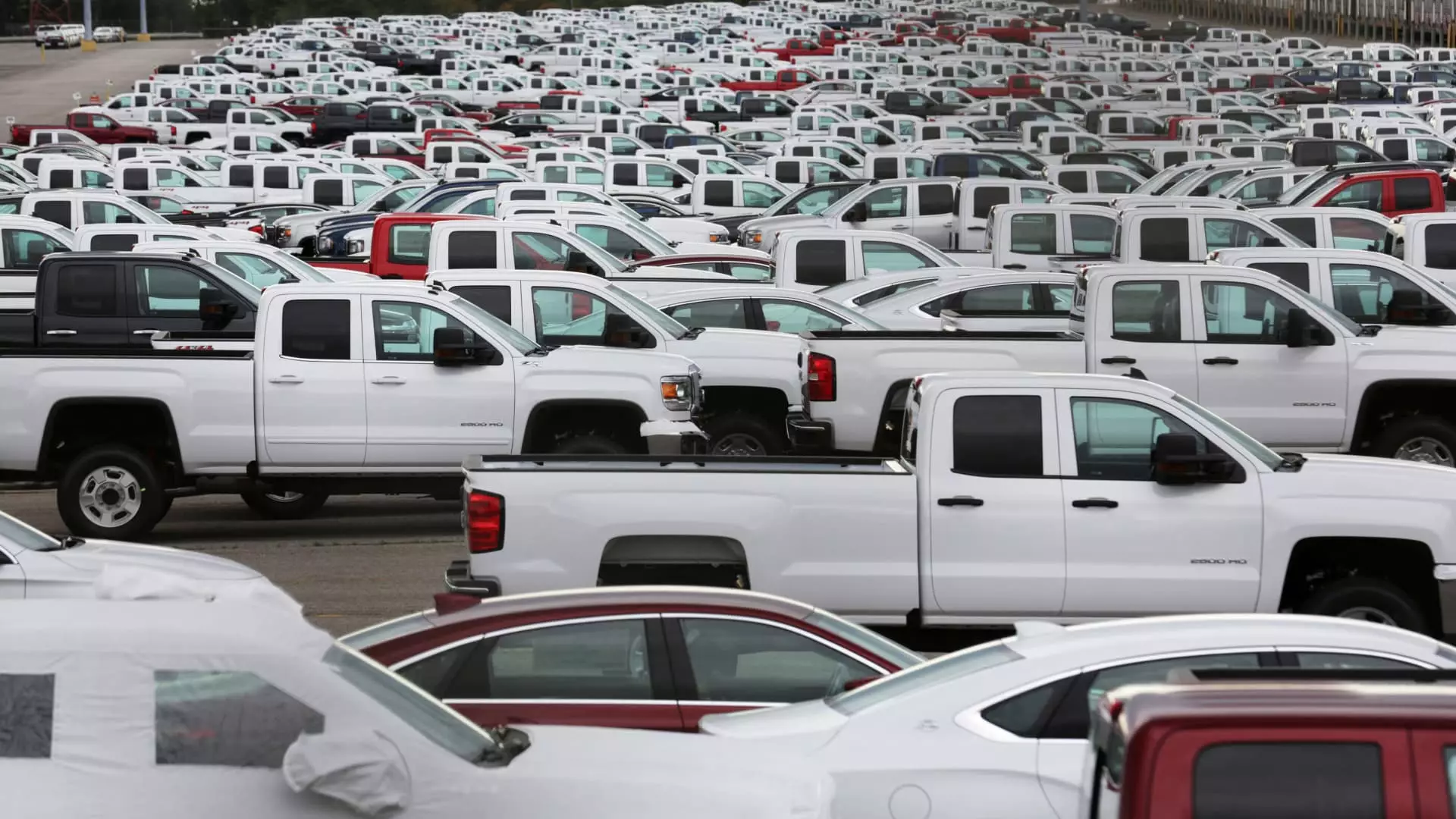The automotive industry is no stranger to volatility, but the latest announcement from Washington has shaken the sector to its core. General Motors (GM) found itself in a precarious position following President Trump’s recent executive order to impose a staggering 25% tariff on imported vehicles and select auto parts. In a sudden downturn, GM’s shares dropped over 6% during mid-morning trading. This stark decline starkly contrasts with competitors like Ford and Stellantis, which saw their stock prices ease down by only 2% and 1%, respectively. Meanwhile, Tesla seemingly emerged unscathed, witnessing a 5% surge. This rollercoaster of market reactions underscores the inherent risks tied to international trade policies and the precarious balance every automaker must maintain between domestic production and overseas sourcing.
The Tariff’s Uneven Impact
The stark divergence in stock responses can be traced back to GM’s extensive reliance on imported vehicles, particularly from Mexico. Analysts from Deutsche Bank pointedly observed that while GM is heavily exposed, rivals like Tesla and Ford appear better insulated from these turbulent waters. The geographic disposition of manufacturing facilities plays a critical role in this scenario. For GM, almost 30% of its vehicles sold in the U.S. are crafted overseas, primarily in Mexico and Canada. This figure serves as a glaring red flag, highlighting how entwined the company is with the current administration’s protectionist policies.
What’s particularly troubling is that while Trump’s tariff plan allows for some lenience for components compliant with the United States-Mexico-Canada Agreement, the lack of clarity surrounding this relief leaves the North American auto industry grappling for stability. Companies operating on a thin margin between profit and loss may find themselves in dire straits if their supply chains are disrupted.
Mexico’s Dominance in the Import Landscape
The figures speak volumes: Mexico accounted for a remarkable 16.2% of vehicle imports into the U.S. in 2024, outpacing second and third-place competitors South Korea and Japan by nearly double. This data sheds light on the structural challenges faced by GM. Analysts suggest that while almost half of GM’s U.S. sales are produced stateside, the remaining assembly locations, specifically Mexico and Canada, raise significant concerns. GM’s over-reliance on foreign-produced components makes them uniquely vulnerable to tariff impositions, creating a precarious balance as they navigate the reactions of an increasingly protectionist market.
This imbalance between domestic assembly and foreign imports is where GM falters most. In contrast, Stellantis and Ford have a significantly higher percentage of vehicles assembled in the U.S., mitigating the risk posed by sudden tariff changes. Stellantis manages to keep 57% of its vehicles made in the states, while Ford leads with 78%. This stark difference suggests that GM could potentially face long-term ramifications if these tariffs were to remain in play.
Strategic Shift Needed for GM
The analysts are urging for a strategic rethink at GM. With a stock price that has plummeted 13% year-to-date, the company faces a pressing need to reassess its supply chain strategy. John Murphy from Bank of America remarked that GM finds itself “relatively exposed” when compared to other automakers, underlining the urgency for a calculated pivot in production methodologies and sourcing. A more domestic-oriented focus could serve as a lifeline, allowing GM to fortify itself against future shifts in trade policy.
However, pivoting toward more domestic production isn’t as simple as flipping a switch. It requires investment in infrastructure, a skilled labor force, and a robust supply chain—all elements that take time to nurture. Furthermore, the landscape of consumer preferences is evolving, and a shift to prioritize U.S. production could lead to higher vehicle costs, thereby affecting sales. Balancing cost, consumer expectations, and geopolitical realities will be the litmus test for GM’s future sustainability.
Future Challenges Looming for the Auto Industry
The implications of these tariffs extend beyond just stock prices; they resonate across the wider automotive landscape. The question now is whether the auto industry, specifically GM, can adapt to these challenges without compromising profitability or consumer trust. With the market dynamics shifting rapidly due to political decisions, companies must be agile. Those stuck in outdated paradigms may find themselves irrelevant in a fast-evolving global market.
The looming uncertainty also highlights an essential truth: the auto industry needs to embrace innovation—not just in technology but in supply chain management and adaptive business models. The focus must be on resilience and sustainability rather than mere compliance with governmental edicts. Historical precedents indicate that those who fail to adapt often pay the price. General Motors certainly appears at a crossroads, grappling with the need for a robust response to impending challenges, while also striving to reclaim its position as a leader in a fiercely competitive landscape.



Leave a Reply